Wonders of Vaziri Caved Museum | Lavasan, Tehran
Lavasan, situated in the northeastern periphery of Tehran, is a prominent urban center celebrated for its lavish residential estates and distinctive mansions.
Revered not only for its opulence but also for its pristine natural environs; the emerald waters of Letian Lake shimmer, inviting exploration by boat or lakeside stroll. Quaint villages like Emameh and Afjeh whisper stories of a simpler life, while lush forests provide a refreshing escape from the urban sprawl.
However, Lavasan's allure extends beyond its natural landscapes. The Vaziri Caved Museum stands as a showcase of artistic ingenuity, where discarded materials are transformed into thought-provoking exhibits within the heart of a mountain. Founded by the visionary artist Naser Houshmand Vaziri, this avant-garde establishment represents a harmonious blend of sustainability and artistic expression, challenging traditional notions of beauty.
A visit to this establishment promises a captivating experience for tourists, inviting them to peruse a diverse array of artworks and installations that reflect a synthesis of resourceful innovation and imaginative brilliance.
The Beginning of the Vaziri Caved Museum

Established as the inaugural private museum cave in Iran, the Vaziri Museum Cave offers visitors a distinctive and impressive encounter with the artistic works of Naser Houshmand Vaziri. Driven by an abiding interest in nature, Vaziri procured a 1000-square-meter parcel in the charming Lavasan area. Commencing the project with rudimentary tools like an ax and hammer, he meticulously carved into the mountain, crafting corridors within its heart through the use of an electric drill and compressor. The excavation and preparation of the cave spanned six years, with Vaziri personally funding the entire garden's construction. In the autumn of 2004, he successfully realized his vision, establishing an exceptional museum within the depths of the mountain.
Within this cave museum, narratives from the Shahnameh and Iranian folklore unfold, either meticulously crafted or curated by Vaziri. Comprising a diverse array of visual arts, these creations, fashioned from recycled materials, extend beyond conventional mediums, incorporating wood, stone, bone, and metal. The eight interconnected corridors within the cave, fortified by concrete walls, serve as a captivating exhibition space for Vaziri's artworks—a culmination of his 50 years of dedicated effort, aimed at showcasing authentic Iranian nationalism and culture.
Throughout their lifetimes, Vaziri remained actively engaged with the museum, providing insights and explanations to visitors. Vaziri's unique perspective on transforming ordinary objects into sculptures adds an intriguing dimension to the museum. Moreover, the texts accompanying the exhibits convey a sense of timeless significance, contributing to the enduring spirit of the artworks.
Who was Naser Houshmand Vaziri?
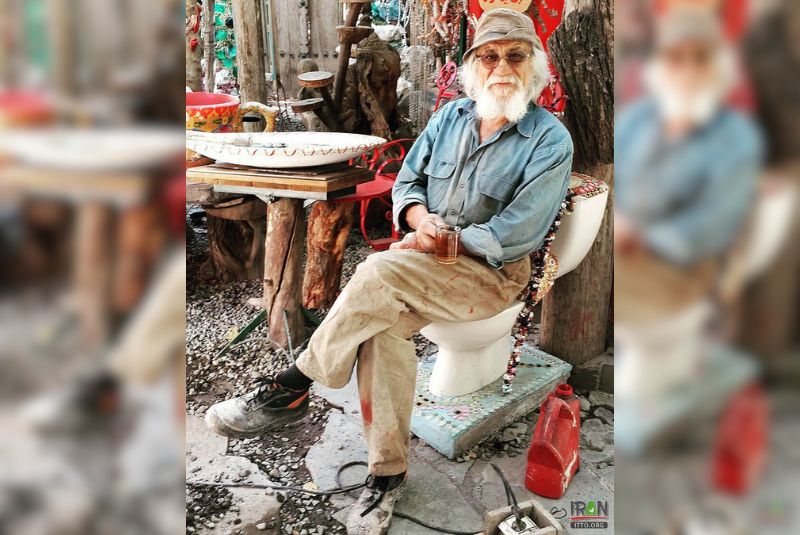
Born in Hamedan in 1946, Naser Houshmand Vaziri emerged as one of Iran's foremost sculptors. He earned his degree in sculpture from the Faculty of Fine Arts at Tehran University in 1971.
A pivotal moment in Vaziri's artistic journey occurred during a meeting with an Italian engineer, which proved to be transformative. Unfamiliar with fiberglass sheets at the time, the Italian engineer introduced Vaziri to this material, making him the pioneer in Iran to explore and utilize fiberglass for sculptures.
In 1995, Vaziri achieved first place in sculpture, marking a noteworthy milestone in his career. Beyond his sculptural accomplishments, Naser Houshmand Vaziri also assumed a leadership role in managing the art department at the Pardisan Natural History Museum.
Vaziri's legacy is etched in numerous works, including the statues adorning Sarem Hospital, the sculpture collection in Jamshidiyeh Park, featuring figures like Ferdowsi, Shahryar, Sattar Khan, Rostam, and Sohrab, animal statues in Saei Park, the statue of Mirza Kuchak Khan in Ahvaz, the statue of Bu Ali Sina in Mahshahr, and 50 statues depicting Iranian legends in Falak-ol-aflak Castle in Khorramabad.
Devoting his time to establishing a museum, Naser Houshmand Vaziri dedicated himself to this collection, always present in his museum cave, welcoming visitors with warmth and humor. He also mentored art students, offering guidance and answering their queries. Unfortunately, this esteemed artist passed away in 2019 due to a heart attack, leaving behind a significant legacy in the realm of Iranian sculpture.
Exploring the Vaziri Caved Museum
The Lavasan Vaziri Cave Museum boasts eight nested corridors, each enticing visitors to eagerly anticipate the next section. Within this unique museum, various segments unfold, including exhibitions, workshops, handicrafts, education, a gallery, and a meeting hall. Noteworthy features encompass a diverse chess collection spanning different eras and a vast Aftabeh collection, showcasing 600 pitchers from various periods in Iran. Since you are allowed to, capture the opportunity to photograph the extensive array of sculptures and artworks curated by Nasser Houshmand Vaziri.
Bastami House
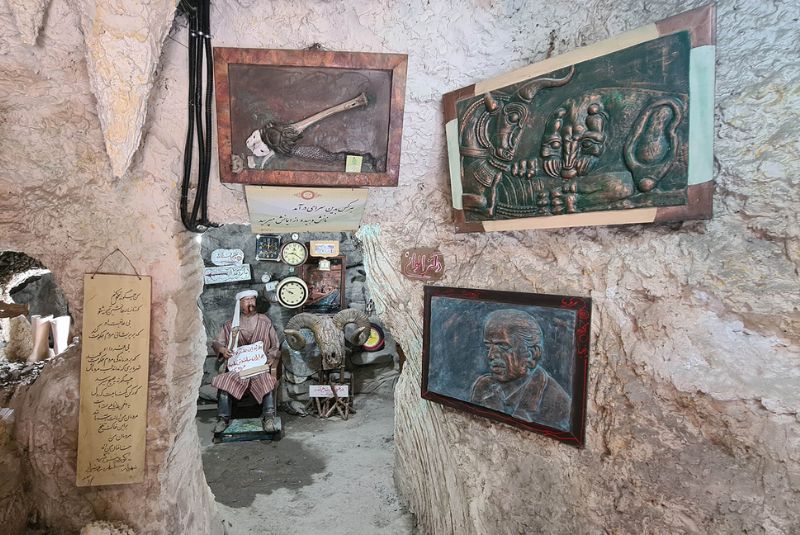
A passage through a modest 90-centimeter wooden door leads to the grandeur of Bastami house. Serving as a spacious hall, Bastami house accommodates seminars and meetings of literary groups, with a capacity for up to 90 people. Vaziri emphasized that the primary objective of the Vaziri Cave Museum is to provide spaces conducive to literary gatherings and discussions on Iranian literature and narratives. The aim is to encourage people to engage in thinking, conversing, and learning about Iranian literature and stories.
Interior of the Cave
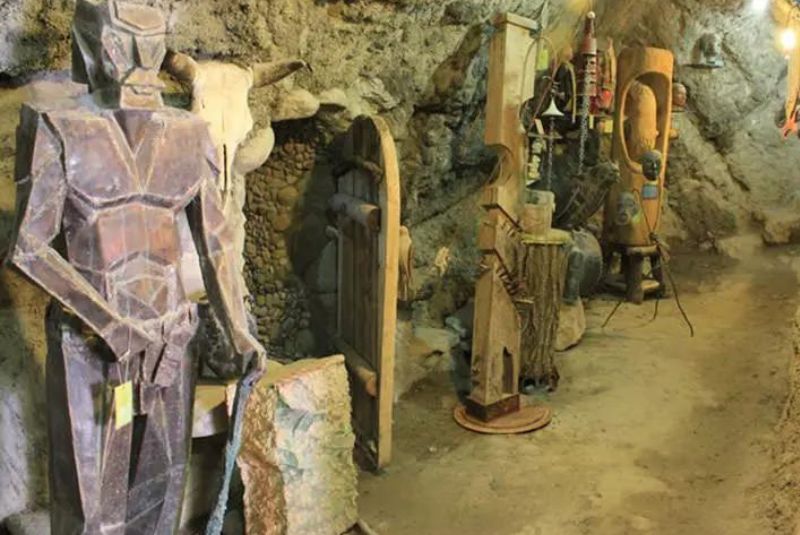
Numerous sculptures within the Vaziri Museum Cave are situated in the heart of the mountain, enveloped by a concrete wall. Comprising eight nested corridors, this section presents one of the most captivating aspects of the museum. To enter the cave, visitors must bow to pass through the mouth of a lion-shaped statue, symbolizing a gesture of respect to nature according to Vaziri. A striking feature is the Rostam statue, with its hands supporting the cave walls, representing Vaziri belief in Rostam ( A heroic figure of Shahnameh) as the protector of Iran. Various statues, ranging from magical creatures to movie characters and elders, are thoughtfully arranged throughout the cave, revealing a remarkable harmony in Vaziri's works. The sculptures, exuding elegance and beauty, leave a lasting impression on visitors.
Gallery
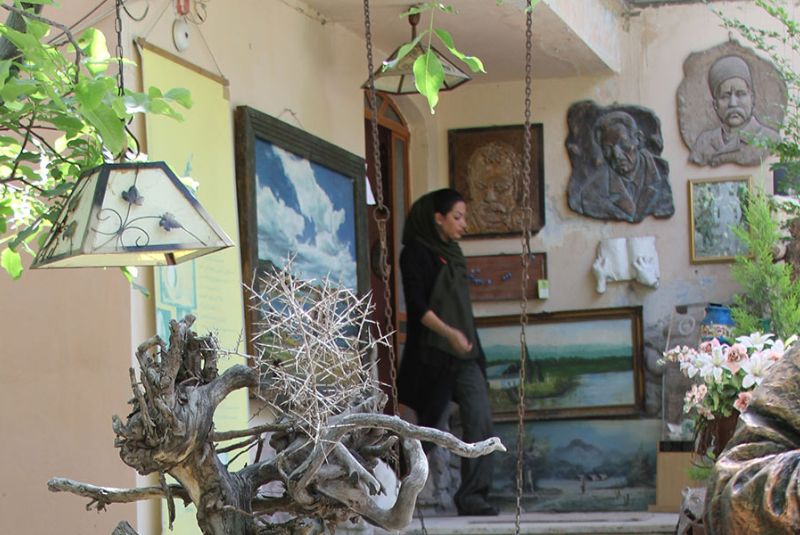
The 40-square-meter gallery section, curated by Roksana Houshmand Vaziri, hosts various exhibitions, including paintings.
Vaziri Crafts Workshop
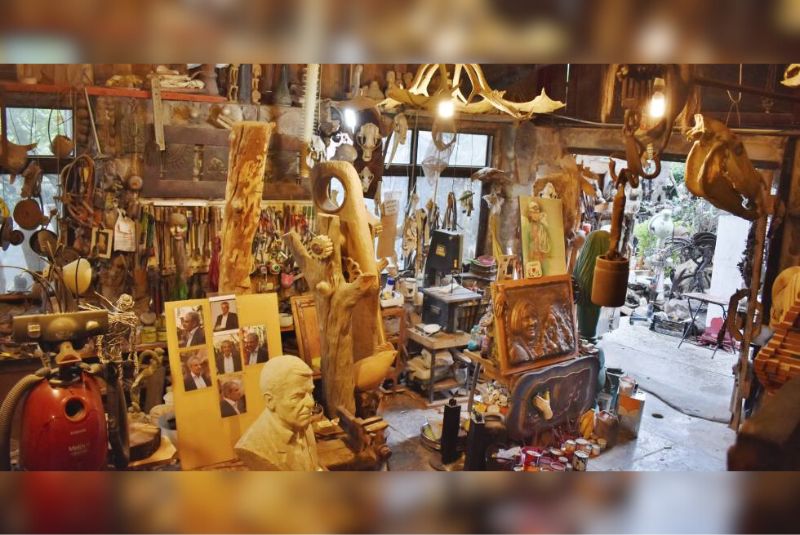
Dedicated to handicrafts, this section features pottery, glazes, and reliefs crafted and painted by Rama Vaziri, available for purchase or customization.
Sculpture Workshop
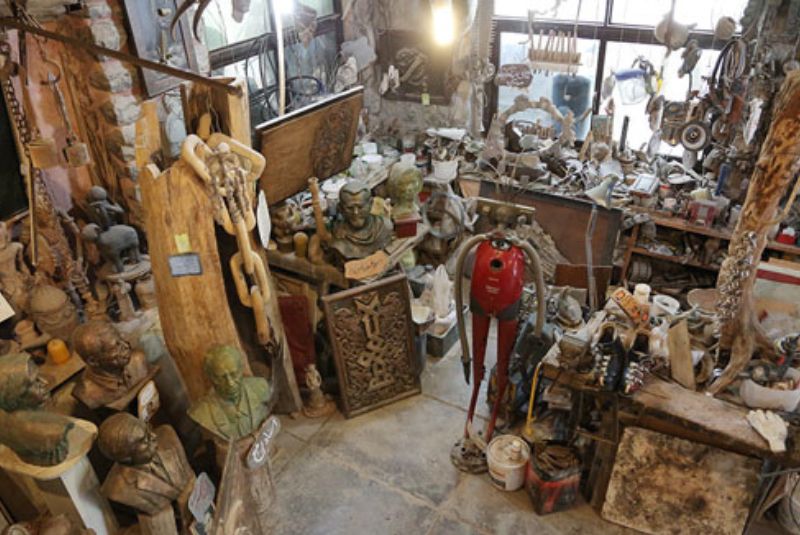
Once the workplace of Vaziri, the sculpture workshop is where the museum's sculptures were crafted. Visitors have the opportunity to interact with the surroundings and inquire about the showcased items.
Recycled Sculptures
Vaziri's ingenuity shines through in sculptures crafted from recycled materials such as cans, plastic, chains, belts, gears, broken toys, and soda bottles. The garden hosts a tree sculpture with plastic and glass bottle leaves, accompanied by Vaziri's note emphasizing the importance of environmental consciousness in sculpture creation.
Outdoor Design
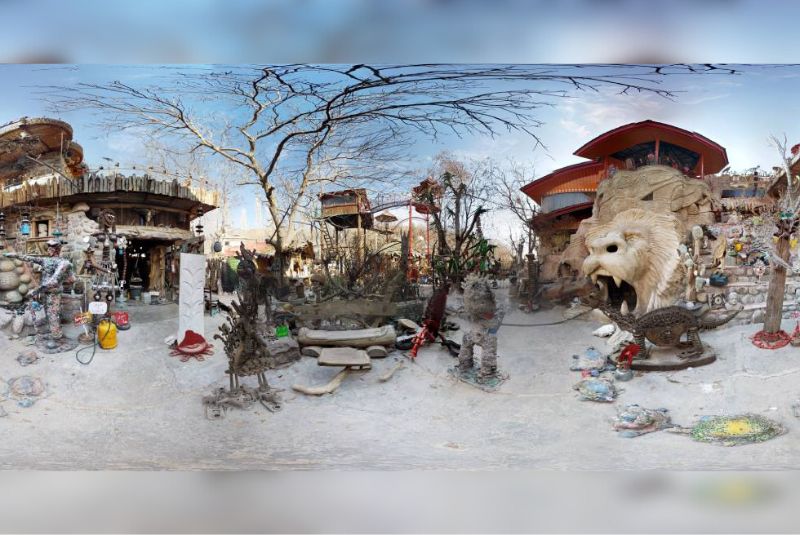
The outdoor area showcases a significant number of sculptures and cave works. Prior to entering the cave, explore the garden adorned with captivating sculptures. Ascend to the top of the wooden gazebo for a unique perspective, offering a different angle to appreciate the museum and its surroundings.
Vaziri Caved Museum Location
Situated at No. 77, Imam Khomeini Blvd., near the Buojan Intersection in Lavasan, Tehran, the Vaziri Caved Museum is conveniently accessible. Visitors can benefit from ample parking space for cars directly in front of the museum garden. However, it's advisable to plan accordingly, especially during peak times such as holidays and weekends when Lavasan attracts numerous visitors. During these periods, finding a parking space in front of the Vaziri Museum garden may require some additional time and patience.
For the best experience, it is advised to consider local or group tours.
Vaziri Caved Museum Visiting Hours
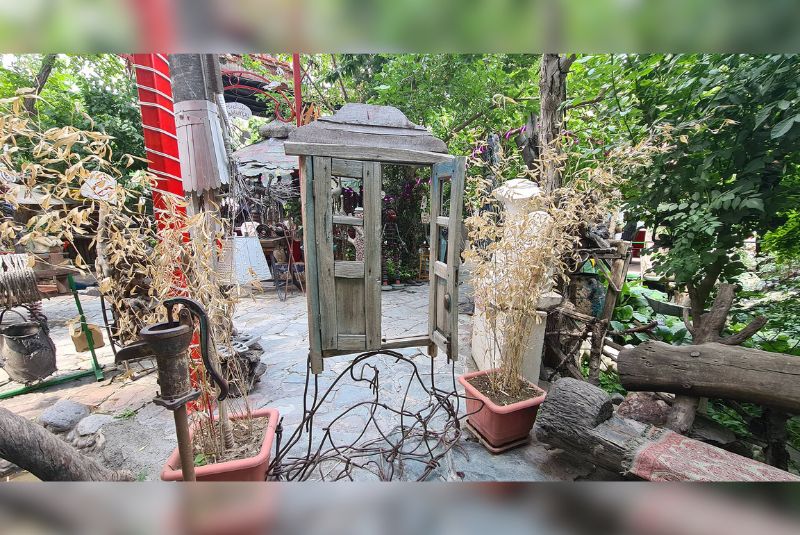
During the first half of the year, the Vaziri Caved Museum welcomes visitors from 9 am to 6 pm. In the second half of the year, the museum's opening hours are from 9 am to 5 pm. Allocate approximately two hours for a comprehensive exploration of this captivating cave.
Best Time to Visit Lavasan Vaziri Caved Museum
Lavasan, situated in the northern part of Tehran, offers a climate cooler than other regions due to the presence of mountains. This makes it an excellent destination, particularly during the summer months. The Vaziri Museum cave is accessible throughout the year, but the most pleasant weather for a visit is experienced during spring, summer, and early autumn. However, for those unfazed by colder temperatures, exploring the museum during winter days can also be an interesting and unique experience.
Bottom Line
For a distinctive experience beyond the conventional historical museums in Tehran, we suggest exploring the Vaziri Caved Museum. Moreover, Lavasan boasts breathtaking natural scenery and delightful weather, offering a splendid opportunity to unwind after your visit to the Vaziri museum.
Share your story!
Comment below and let us know about your Experience.
Your story inspires others!


Comment
Leave a Comment